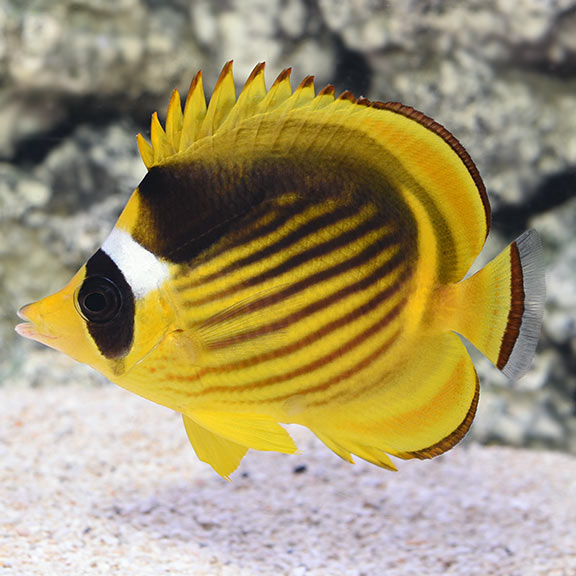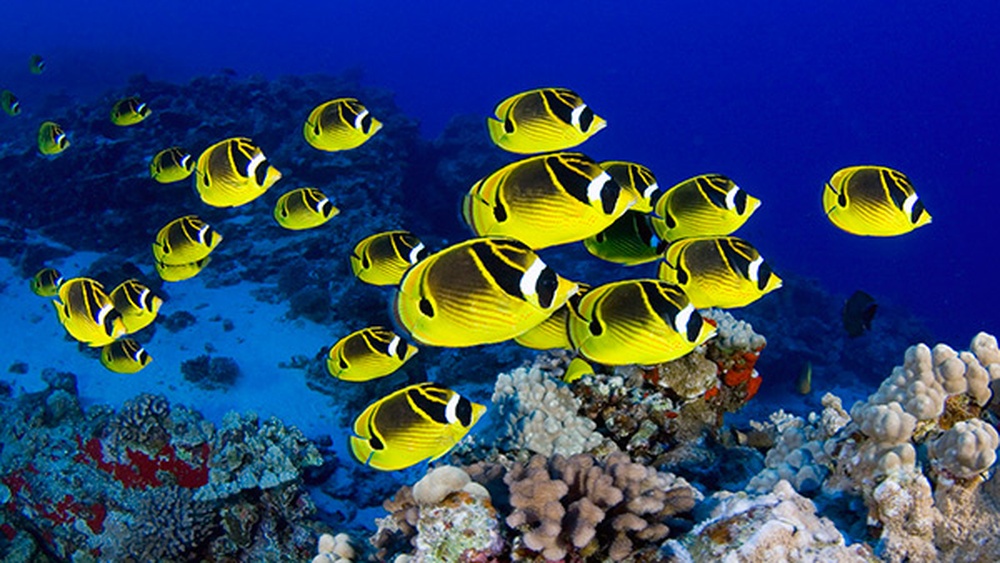The Raccoon Butterflyfish is a beautiful saltwater fish. Many people want to keep it in their home aquarium.
This fish has bright colors and a mask-like pattern on its face, like a raccoon.
It is a fun fish to watch. But caring for it needs effort and knowledge.
About the Raccoon Butterflyfish
The Raccoon Butterflyfish lives in the warm waters of the Indo-Pacific. This means places like East Africa and Polynesia.
It likes coral reefs and rocky areas. There, it finds food and safe places to hide.
This fish is called Chaetodon lunula in science. It can grow about 8 inches (20 cm) long. It has yellow, black, and white colors.
Its black mask looks like a raccoon’s face mask. This makes it easy to recognize.

Credit: www.fishkeepingworld.com
Tank Setup for Raccoon Butterflyfish
To keep a Raccoon Butterflyfish happy, the tank must be right. Here are the main points:
- Tank size: At least 50 gallons is best.
- Water quality: Clean, filtered, and well-oxygenated water is needed.
- Water flow: Moderate current is good, like in their natural home.
- Temperature: Keep water between 72°F and 78°F (22°C – 26°C).
- pH level: Aim for 8.1 to 8.4.
- Salinity: Keep salt levels around 1.020 to 1.025 specific gravity.
The tank should have rocks and coral decorations. These create hiding places and help the fish feel safe.
This fish can be shy at first and likes places to hide.
Feeding Your Raccoon Butterflyfish
The Raccoon Butterflyfish is an omnivore. It eats many types of food. In the wild, it eats:
- Sea anemones
- Nudibranchs (small soft-bodied sea animals)
- Worms
- Coral polyps
- Algae
In an aquarium, you must give a varied diet. This keeps the fish healthy and happy.
Good food options include:
- Frozen mysis shrimp and brine shrimp
- High-quality marine flakes and pellets
- Chopped meaty foods like krill or fish
- Live foods like brine shrimp or bloodworms to encourage eating
- Algae sheets (nori) for plant matter
The Raccoon Butterflyfish eats mostly at night in the wild. But in your tank, it can learn to eat during the day.
Try feeding it 2-3 times daily in small amounts.
Behavior and Compatibility
This fish is mostly peaceful but can be shy. It may hide when it feels unsafe.
It can live with many other fish, but not all. Avoid very small or slow fish that the butterflyfish may bother.
It will eat some coral polyps and small animals in a reef tank. So, it is not always safe for a coral-only reef aquarium.
If you have a reef tank, watch the fish carefully.
The Raccoon Butterflyfish can help control pests like aiptasia anemones. These pests can harm your reef. The fish eats them.
Health and Common Problems
Keeping water clean is the key to good health. Dirty water can make the fish sick.
Watch for signs of illness like:
- Loss of appetite
- White spots on the body
- Clamped fins
- Slow or no movement
Quarantine new fish before adding them to your tank. This stops disease spread.
You can use appetite stimulants if your fish stops eating.
Tips for Raccoon Butterflyfish Care
- Keep a steady water temperature and pH level.
- Feed a mix of frozen, live, and plant foods.
- Provide lots of hiding places with rocks and corals.
- Watch fish behavior for stress or illness.
- Use good filtration to keep water clean.
- Change water regularly to remove waste.
- Be patient; the fish may hide at first.

Credit: www.liveaquaria.com
Summary Table: Raccoon Butterflyfish Care
| Care Aspect | Details |
|---|---|
| Tank Size | 50 gallons or more |
| Water Temperature | 72°F – 78°F (22°C – 26°C) |
| pH Level | 8.1 – 8.4 |
| Salinity | 1.020 – 1.025 specific gravity |
| Diet | Frozen shrimp, pellets, live foods, algae |
| Behavior | Mostly peaceful, shy, nocturnal feeder |
| Compatibility | Good with many fish, not reef-safe always |
| Common Issues | Water quality, illness, coral nipping |
Final Thoughts
The Raccoon Butterflyfish is a lovely addition to many saltwater tanks. But it needs care and attention.
Keep water clean and provide good food. Give plenty of places to hide.
This fish can help control pests like aiptasia. But be careful with corals in your tank.
With patience, the fish will become active and fun to watch.
Remember, good care means a happy, healthy fish. Enjoy your Raccoon Butterflyfish!
Frequently Asked Questions
How Do You Take Care Of A Raccoon Butterflyfish?
Maintain excellent water quality with strong filtration and oxygenation. Provide varied diet: flakes, pellets, frozen shrimp, and algae. Feed mostly at night but adjust to daytime. Avoid housing with delicate corals, as they may nip. Ensure moderate water flow and stable temperature for healthy raccoon butterflyfish care.
What Does A Raccoon Butterflyfish Eat?
Raccoon butterflyfish eat sea anemones, nudibranchs, worms, coral polyps, and algae. In captivity, feed them marine flakes, pellets, frozen shrimp, and live foods. They also consume aiptasia, helping control pest anemones in reef tanks.
What Size Tank Does A Raccoon Butterfly Fish Need?
A raccoon butterflyfish needs a minimum 75-gallon tank for ample swimming space and stable water conditions. Provide strong filtration and moderate current for optimal health.
Are Raccoon Butterflyfish Hardy?
Raccoon butterflyfish are moderately hardy but require excellent water quality and stable conditions. They adapt well to aquarium life with proper care.
What Is The Ideal Tank Size For A Raccoon Butterflyfish?
A minimum 50-gallon tank is recommended to provide enough space and swimming room.
What Water Conditions Suit Raccoon Butterflyfish Best?
Keep water temperature 72-78°F, pH 8. 1-8. 4, and maintain strong filtration with good oxygen.
What Do Raccoon Butterflyfish Eat In Captivity?
Feed a mix of frozen shrimp, marine flakes, pellets, and occasional live foods.
How Often Should I Feed My Raccoon Butterflyfish?
Feed small amounts 2-3 times daily to keep them healthy and active.

